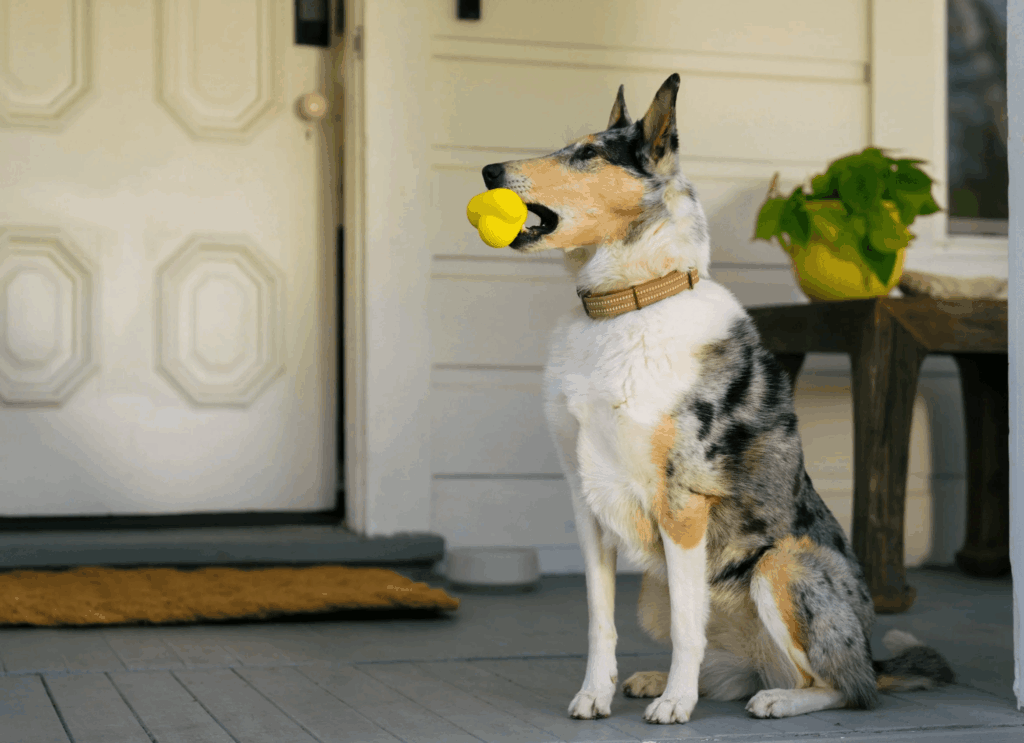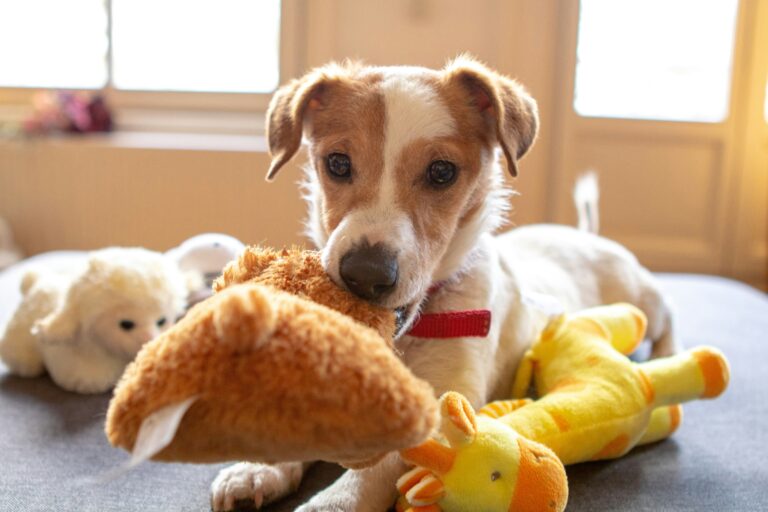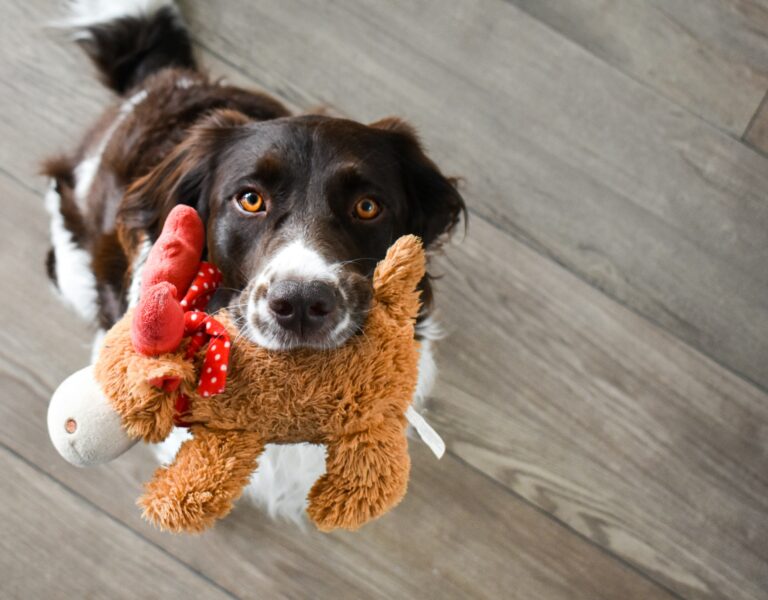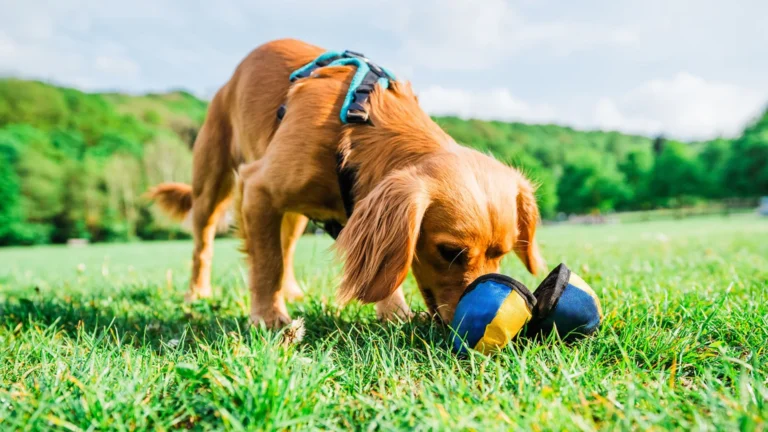Unleashing creativity and bringing joy to furry friends go hand in hand in this insightful exploration of crafting homemade small dog toys. A perfect blend of DIY delights, these pet-friendly creations promise to offer hours of tail-wagging fun. This post will delve into the enchanting world of hand-made dog toys, their benefits, and simple, step-by-step instructions to create them.

Beyond merely providing a pastime, DIY dog toys have the unique power to strengthen the bond between pet and owner. They can offer an enriching experience that store-bought toys fail to provide. In the subsequent sections, we’ll explore the ways in which these crafted toys can contribute positively to a dog’s physical and mental wellbeing.
The charm of homemade toys lies in their versatility and the ability to customize them according to our pet’s preferences. With the help of easily available household materials, we’ll demonstrate how to craft safe and engaging toys that can keep your small dog entertained for hours.
In the final sections, we’ll share some creative yet easy-to-follow DIY small dog toy ideas. Whether it’s a tug toy, a chew toy, or a treat-dispensing toy, we’ve got it covered. So, prepare to embark on this exciting journey of crafting delightful toys and seeing the joy it brings to your lovable four-legged companion. 🐶🧶🔨
DIY Enrichment Toys for Small Dogs
Beyond simple chew or tug options, enrichment toys provide mental stimulation and help alleviate boredom and anxiety. These types of toys mimic problem-solving or foraging behaviors, which are natural for dogs. Crafting enrichment toys at home is easier than many pet owners think and requires only a few common household items.
Muffin Tin Puzzle Game
To make a simple puzzle toy, all you need is a muffin tin and some tennis balls or soft balls that fit inside the cups. Place a few treats or pieces of dry kibble into some of the muffin compartments, then cover each compartment with a ball. Your dog must sniff out and remove the balls to find the treats hidden underneath. This game exercises your dog’s sense of smell and offers an exciting challenge.
DIY Snuffle Mat
A snuffle mat is another fantastic enrichment tool. Made by tying strips of fleece through a rubber sink mat (the kind with holes), the snuffle mat allows you to hide treats among the fabric strips. Dogs love using their noses to hunt for snacks hidden within the folds, which satisfies their natural foraging instincts and slows down fast eaters.
Upcycled Dog Toys: Turning Trash into Tail-Wagging Treasure
Sustainability can be part of your pet care routine. Upcycled toys allow you to reduce household waste while creating engaging toys for your pup. These eco-friendly solutions are great for environmentally conscious pet parents.
Sock Knot Toy
Have an old sock with a hole in it? Turn it into a quick DIY dog toy. Simply take two or three old socks, tie them into a large knot, and trim the loose ends to avoid fraying. For extra appeal, place a small, safe ball inside one of the socks before tying it up. This gives the toy more structure and an unpredictable bounce that dogs love.
T-Shirt Rope Toy
Instead of discarding old t-shirts, you can cut them into strips and braid them into a tough rope. These toys are excellent for tug games or light chewing. Make sure the t-shirt is free of loose threads or buttons, and always tie the ends tightly to prevent unraveling.
Sensory Toys for Pups with Special Needs
Not all dogs interact with toys the same way. Puppies, seniors, and dogs with impairments might need special considerations. Sensory toys cater to dogs who are visually impaired, hearing-impaired, or dealing with anxiety.
Scented Fabric Toys
Adding scent to a toy can provide an added layer of stimulation for visually impaired or senior dogs. You can infuse a cloth toy with natural scents like lavender (calming) or chamomile (soothing). Rub a small amount of essential oil on a cloth and place it inside a stuffed toy—just be sure to use dog-safe oils and consult a vet for any sensitivity concerns.
Crinkle Bottle Toys
Many dogs love toys that make noise. You can make a crinkle toy by placing an empty, clean plastic water bottle inside a fabric sleeve or an old sock. Secure both ends tightly with knots or stitching. The crinkling sound excites many dogs and keeps them coming back to chew and shake.
Safety Protocols and Toy Testing at Home
Homemade toys don’t go through industry-standard testing, so it’s up to you to ensure they are safe. A few proactive habits can go a long way in protecting your dog from choking hazards or injury.
Test for Durability
After crafting a toy, give it a test tug, twist, or chew using moderate force—imitating what your dog might do. If it seems fragile, reinforce it with additional stitching, knots, or layers. It’s also helpful to have a “test dog” session, closely supervising your pup’s first interaction with the new toy.
Know the Danger Signs
Be alert for signs that a toy may no longer be safe: excessive fraying, exposed stuffing, sharp plastic edges, or pieces that can be chewed off and swallowed. If you notice your dog chewing too aggressively or swallowing toy fragments, take the toy away and opt for something more durable.
Keeping DIY Toys Clean and Fresh
Cleanliness is a key component in toy maintenance, especially since these items often end up in your dog’s mouth and on the floor. Some materials are easier to clean than others, and establishing a cleaning schedule can help keep your pup healthy.
How to Wash Fabric-Based Toys
Most fabric-based toys, like braided t-shirts or stuffed items, can be machine-washed. Place the toys inside a pillowcase or laundry bag and wash on a gentle cycle using pet-safe detergent. Air drying is preferable to avoid heat damage or shrinking.
Cleaning Rubber or Plastic DIY Toys
Rubber-based DIY toys (like treat-dispensing bottles) can be soaked in a solution of water and white vinegar (1:1 ratio) for 15–20 minutes. Rinse thoroughly and dry completely before returning the toy to your dog. Avoid using harsh cleaners or bleach, which can leave residues harmful to pets.
Creating Seasonal or Holiday-Themed DIY Toys
Creating toys that align with the season or a specific holiday adds a layer of festive fun and variety. These toys can double as themed photo props or gifts for fellow dog lovers.
Halloween Squeaky Ghost
Use white fleece or felt to sew a small ghost shape and fill it with cotton stuffing and a squeaker insert. Add stitched-on eyes or use fabric paint for safe, durable decoration. This toy is great for spooky season photos and light play.
Valentine’s Day Heart Tug
Cut red and pink fabric into strips and braid them into a tug toy. You can add plush heart shapes at each end to create a themed tug rope. It’s simple, charming, and a great way to celebrate with your dog.
Teaching Your Dog to Love Their DIY Toys
Dogs may need encouragement to engage with new toys—especially those that don’t immediately smell like treats or resemble familiar objects. Help your dog discover the joy of homemade toys with a bit of positive reinforcement.
Pairing Toys with Treats
Introduce the toy alongside a treat to build a positive association. For example, toss the toy and reward your dog with praise and a treat when they interact with it. Over time, the toy itself will become the reward.
Use the Toy in Play Sessions
Incorporate the DIY toy into your regular play routine. If your dog loves tug, use your handmade rope during tug-of-war. If they enjoy fetch, toss your DIY ball instead of the usual one. Familiar actions using the new toy will help your dog warm up to it.
Rotate with Store-Bought Favorites
Mix DIY and commercial toys in your dog’s play area. This not only keeps things interesting but allows you to observe whether your homemade creations hold your dog’s attention as effectively as store-bought ones.
Ensuring Safety in DIY Dog Toys
Crafting your own dog toys at home can be both rewarding and economical, but safety should always remain a top priority. While DIY projects allow you to tailor toys to your small dog’s preferences, using the wrong materials or overlooking potential hazards can pose serious risks. In this section, we’ll explore detailed safety considerations to ensure that your homemade creations provide nothing but fun and enrichment for your furry friend.
Supervise Playtime at All Times
Even if you’ve taken every precaution while crafting the toy, supervision is essential, especially during the first few uses. Dogs may surprise you with how quickly they can dismantle something that appears sturdy. Watching your dog while they engage with a toy allows you to intervene immediately if parts become loose, or if they begin chewing too aggressively.
Understand Your Dog’s Chewing Behavior
Not all small dogs are gentle. While some enjoy simply nudging or carrying toys around, others will bite and pull with surprising strength. Get to know your dog’s play style—are they a shredder, a chewer, or a soft-player? This will influence the types of materials you should use. For chewers, tougher fabrics and thick rope are ideal. For cuddlers, fleece or soft cotton is sufficient but may require reinforcement in the seams.
Use Only Non-Toxic and Pet-Safe Materials
Choosing safe materials is critical. Avoid fabrics that have been treated with flame retardants, waterproof coatings, or dyed with harsh chemicals. Recycled materials, like old jeans or t-shirts, can be great, but they must be thoroughly cleaned and free of detergent residues. For stuffing, avoid polystyrene or foam—opt instead for shredded cotton or clean old socks. If you plan to include plastic bottles for crinkle sounds, ensure all caps and rings are removed and consider wrapping the bottle in thick fabric.
Avoid Choking Hazards
Buttons, beads, ribbons, and zippers should be avoided completely. Even if well attached, these small elements can easily be torn off during play and accidentally swallowed. Also, avoid glues or adhesives unless specifically labeled as non-toxic and child-safe. Instead, rely on sewing, knotting, and other secure fastening methods.
Reinforce and Double-Stitch Toys
One of the most important construction tips is reinforcement. For any sewn DIY toys, use strong thread (like upholstery thread) and consider double or even triple stitching the seams. For rope toys, always use sturdy knots and test them with strong pulls before giving the toy to your pet. Reinforcement dramatically improves the toy’s lifespan and reduces the chance of breakage.
Inspect and Replace Worn Toys
Just like store-bought toys, homemade toys have a lifespan. Make it a routine to check your dog’s toys at least once a week for signs of fraying, tearing, or broken components. If a toy starts to unravel or tear, discard it immediately. Even a single exposed piece of stuffing or loose thread can become a hazard if swallowed.
Wash Toys Regularly
Dogs use their mouths constantly, and toys are quickly covered in saliva, dirt, and bacteria. Make it a habit to clean your dog’s toys regularly. Rope toys can often be washed in a mesh laundry bag on a gentle cycle. Fabric toys can be hand-washed or machine-washed using mild, pet-safe detergents. Dry them thoroughly before returning them to your dog.
Keep a Toy Rotation System
Rather than giving your dog access to all their toys at once, rotate them weekly. This not only maintains their interest but also allows time for thorough inspection and cleaning of resting toys. You’ll also be able to better monitor the condition of each item, ensuring damaged toys are not in circulation.
Label and Separate Toys by Function
If you make different toys for chewing, fetching, and training, label or color-code them accordingly. This helps ensure toys used outdoors aren’t mixed with plush cuddle toys used indoors. Functional separation also helps maintain hygiene and control wear patterns.
Involve Your Dog in the Process
Whenever possible, introduce your pet to new toys in an interactive setting. This gives you the chance to observe their first reactions and guide them into using the toy appropriately. If the toy is meant to be chewed, for example, reward your dog when they interact with it calmly rather than tearing it apart.
Know When to Seek Advice
If you’re ever unsure whether a toy idea is safe, consult your veterinarian. They can advise you based on your dog’s health condition, breed tendencies, and size. This is especially important for dogs with dental issues, food allergies (relevant when using treat-based toys), or behavioral quirks like obsessive chewing.
Regularly Inspect the Toy
Regularly inspect the toy for any signs of wear and tear. If the toy is starting to break down, it’s time to replace it. Pieces that break off can be a choking hazard for your dog.
Maintenance of DIY Dog Toys
Maintenance of these toys is another crucial aspect that mustn’t be overlooked. Regular cleaning can help keep your pet’s toys safe and long-lasting.
Cleaning
Toys should be cleaned regularly to prevent the build-up of bacteria and germs. Depending on the materials used, most toys can be washed by hand or in a washing machine. Avoid using harsh detergents or chemicals that can be harmful to your pet.
Replacement
Despite your best efforts, no toy is indestructible. Regularly check the toy for any signs of damage or wear and replace it as needed.
Benefits of DIY Dog Toys
Creating homemade dog toys not only offers a fun and engaging activity for your pet, but it also brings a host of benefits.

Cost-effective
DIY dog toys can be much more cost-effective than store-bought ones. You can use materials you already have at home, or you can purchase inexpensive materials.
Customizable
DIY dog toys allow you to customize the toy to your pet’s preferences. You know your pet best and can design a toy that they will love.
Bonding Time
Creating DIY dog toys provides an excellent opportunity for bonding with your pet. You can involve your pet in the creation process and enjoy playtime together once the toy is complete.
In conclusion, the ‘DIY Delights: Crafting Homemade Small Dog Toys for Hours of Tail-Wagging Fun!’ provides invaluable insights for dog owners seeking affordable, creative, and fun ways to keep their furry friends entertained. It’s impressive to see how regular household items can be transformed into exciting toys that not only engage our pets but also serve as a bonding opportunity.
Homemade toys, besides being cost-effective, are also healthier options as we can control the materials used, thus ensuring our pets’ safety. The article is an excellent resource, demonstrating that crafting dog toys can be an enjoyable and rewarding task.
However, remember that while DIY toys are great, they are not replacements for regular exercise and interactive playtime that dogs need. Always supervise your pet when they’re playing with homemade toys to prevent any potential hazards.
In a nutshell, ‘DIY Delights: Crafting Homemade Small Dog Toys’ is an article that truly lives up to its title. It encourages dog owners to embrace their creative side, resulting in hours of tail-wagging fun for their pets. 🐶🎾 So why not give it a try? It’s time to start crafting and create some tail-wagging fun!



